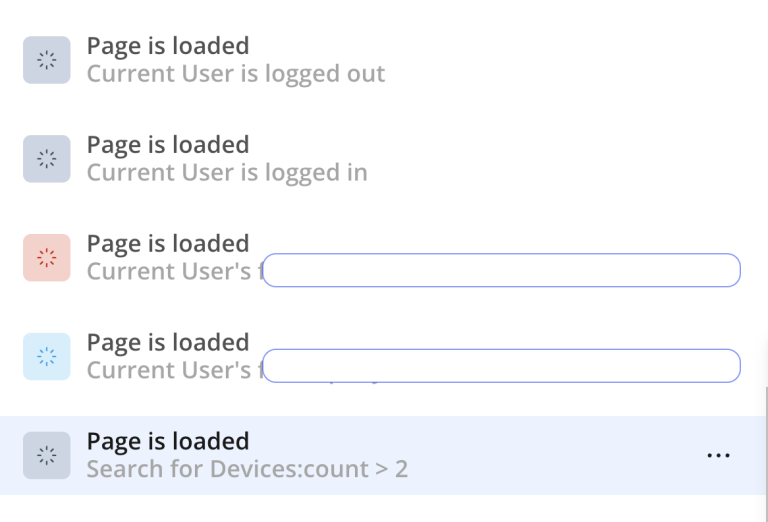[Bubble.io Optimization]How to Optimize Your Bubble.io Page Loaded Event Workflow
When building apps on Bubble.io, it’s easy to get carried away adding workflows for every feature. But without proper optimization, your app can end up slow, buggy, and frustrating for users — especially when you scale.
In this guide, I’ll walk you through detailed, step-by-step methods to make your Bubble.io workflows faster, cleaner, and easier to maintain.
Understand How Bubble Executes Workflows
Before optimizing, you need to understand that Bubble processes:
-
Page workflows → triggered by user actions (clicks, inputs, etc.)
-
Backend workflows → triggered on the server side (API, scheduled events)
-
Condition checks → executed before actions
⚡ Pro tip: Every unnecessary workflow or condition check increases load time and processing cost.
How to Optimize in easy understanding?
-
Reduce “On Page Load” Overhead
Many apps slow down because they fetch too much data immediately.
What to do:
-
Only load the minimum data needed for the first view.
-
Use lazy loading for images, repeating groups, and lists.
-
Store static settings in an Option Set instead of querying the database.
-
-
Minimize Database Searches
Database searches are the heaviest operations in Bubble.
Best practices:
-
Use constraints in the search instead of filtering after loading.
-
Index key search fields in the database settings.
-
Cache frequently accessed data in a custom state.
-
-
Use Backend Workflows for Heavy Tasks
If your workflow involves:
-
Sending emails to multiple users
-
Processing large amounts of data
-
Updating multiple database entries
… Move it to a backend workflow so it runs asynchronously without freezing the UI.
Example:
When a user uploads a CSV, instead of processing it on the page:-
Save file to S3
-
Trigger backend workflow to process rows in batches
-
-
Avoid Repeated Workflows with “Only When” Conditions
Bubble executes actions every time a trigger happens, unless you control it.
Optimize by:
-
Adding “Only when” conditions to prevent duplicate runs
-
Using Custom States to mark completion of an action
Example:
Bad practice: On input change → Run API call (every keystroke)
Good practice: On input change → Run API call only when input length > 3 -
-
Combine Multiple Actions into One
Instead of having 3–4 workflows for the same trigger, merge them into one and change order of actions.
Each trigger starts a new thread, adding overhead.Example:
Bad practice:-
Workflow 1 → Update DB
-
Workflow 2 → Send Email
-
-
Use Option Sets for Static Data
-
Utilize Custom State for hardly changing data
[PROBLEM Statement]Q 1.
What is the most efficient approach to managing page load conditions in Bubble.io? Should I handle all different conditions within a single Page Load workflow, or should I create separate Page Load workflows for each specific condition?
One of the common mistakes I see when reviewing Bubble.io apps is the overuse of multiple Page Load events. It’s easy to think, “I’ll just create a new Page Load workflow for each condition,” but here’s the catch—every single Page Load workflow runs when the page loads, even if its condition isn’t met. This means your app is doing extra work in the background, which can slow things down.
A smarter approach is to consolidate your logic. Instead of having five separate Page Load events for five different conditions, consider combining them into a single Page Load event with multiple conditional actions. This way, the app processes only what it needs in one place, reducing overhead and making your workflow easier to maintain.
Why it matters:
-
Fewer workflows mean fewer unnecessary background checks.
-
Easier debugging—everything is in one central workflow.
-
Better performance and a smoother experience for your users.
When it comes to page loads in Bubble.io, think “one entry point, smart branching,” instead of “five separate doorways that all open at once.”

[Soution to PROBLEM Statement]Ans 1.
- Single Page Load Event with Conditions:
- Why this is better:
- Pro tip: Use custom states to prevent workflows from running multiple times. Set a custom state like “Page loaded = yes” on first run, then add conditions to check this state before executing actions.
- Additional optimization:

[Soution to PROBLEM Statement]Step by step Implementation
- Single Page Load Event Structure:
- Actions with conditions:
- Why this is better:
- Pro tip: Keep these redirect conditions as straightforward as possible. When we use simple expressions like “User is logged out,” our system can redirect immediately server-side instead of loading the page first, which saves even more workload!
